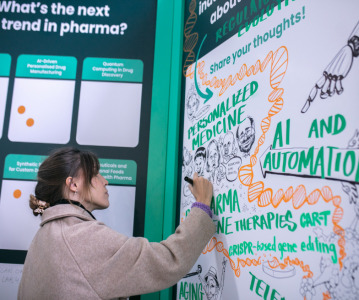Increased diagnoses of hemophilia A and B will drive Asia-Pacific market growth to 2022

Novo Nordisk’s N9-GP and CSL-Behring’s CSL-689 are expected to be launched in the forecast period and capture significant market share.
The hemophilia A and B markets in the Asia-Pacific (APAC) region are forecast to expand from $444.9 million and $76.3 million in 2015 to $699.1 million and $112.9 million by 2022, representing compound annual growth rates of 6.7% and 5.8%, respectively, according to business intelligence provider GBI Research.
The company’s latest report states that the growing awareness of hemophilia and associated risk factors, together with the availability of free testing services for new and existing hemophilia A and B patients, will increase diagnosis, driving demand and contributing to APAC market growth.
Gayathri Kanika, Analyst for GBI Research, notes: “One of the most pressing unmet needs in the hemophilia space is for a treatment to address inhibitor development, particularly in those with hemophilia B. The late-stage pipeline contains promising long-acting replacement therapies and non-factor therapies that have the potential for approval and launch during the forecast period.”
The most important driver of growth in the APAC hemophilia A and B markets will be the transition from short-acting to costly long-acting replacement therapies, such as Novo Nordisk’s N9-GP and CSL-Behring’s CSL-689. These products are expected to be launched in the forecast period and capture significant market share, as they require fewer injections and have convenient routes of administration.
In addition to new drugs and rising hemophilia diagnoses, increasing affordability and healthcare access in India and China are likely to contribute to the growth of the treatment-receiving pool significantly.
Kanika explains: “Currently, the diagnosis and treatment rates of hemophilia A and B in India and China, which account for the majority of the prevalence population in APAC, are far lower than the diagnosis and treatment rates in Australia, Japan and South Korea, due to low disease awareness among the public. However, some pharma companies, including Baxalta and Novo Nordisk, have created hemophilia awareness initiatives in India.
“In 2016, the National Hemophilia Cooperative Group in China initiated a project that covers 43 hemophilia treatment centers and provides free testing services for new and old hemophiliacs, helping more than 6,000 people with hemophilia.”
Related News
-
News Lessons from CPHI Milan 2024: Sunny Intervals for Pharma Manufacturing?
As the 2024 CPHI conference wrapped up in Milan, we caught up with L.E.K. Consulting – a global strategy consulting firm with deep expertise in pharma manufacturing – to discuss evolving market perspectives and business outlook. -
News US BIOSECURE Act passed by US House of Representatives
The controversial act, which has already impacted several foreign companies operating in the US, was passed by the House of Representatives on September 9, 2024. It is now headed for the US Senate before it can be signed into law by President Joe Biden... -
News Pharma Supply Chain People Moves
The latest appointments, promotions, and structural changes across the pharmaceutical supply chain. -
News Drug prices agreed upon as part of the US Inflation Reduction Act
The Inflation Reduction Act brought into constitution by the Biden administation in 2022, which proposed a drug price negotiation between the government and pharmaceutical companies, has reached it's first agreement. -
News BIOSECURE Act continues to loom over Chinese pharma manufacturers
With the US BIOSECURE Act on its way to passing into legislation, Chinese companies are facing declining revenues within the first half of 2024 as US pharmaceutical and healthcare companies pull their businesses from the country. -
News Ophthalmologic drug product Eylea faces biosimilar threats after FDA approvals
Regeneron Pharmaceutical’s blockbuster ophthalmology drug Eylea is facing biosimilar competition as the US FDA approves Biocon’s Yesafili and Samsung Bioepis/Biogen’s Opuviz. -
News ONO Pharmaceutical expands oncology portfolio with acquisition of Deciphera
ONO Pharmaceutical, out of Japan, is in the process of acquiring cancer-therapy maker Deciphera Pharmaceuticals for US$2.4 billion. -
News First offers for pharma from Medicare drug price negotiations
Ten high-cost drugs from various pharma manufacturers are in pricing negotiations in a first-ever for the US Medicare program. President Biden’s administration stated they have responded to the first round of offers.
Position your company at the heart of the global Pharma industry with a CPHI Online membership
-
Your products and solutions visible to thousands of visitors within the largest Pharma marketplace
-
Generate high-quality, engaged leads for your business, all year round
-
Promote your business as the industry’s thought-leader by hosting your reports, brochures and videos within your profile
-
Your company’s profile boosted at all participating CPHI events
-
An easy-to-use platform with a detailed dashboard showing your leads and performance




.png)
.png)

.png)